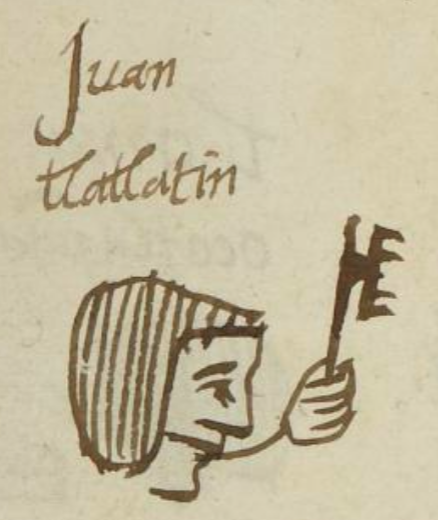tlatlapoloni (MH508r)
This black-line drawing of the simplex glyph for the noun "key" (tlatlapoloni) shows a human hand with a long, vertical key, about the length of three or more fists, to give an idea of its proportions. The key has four or five teeth that are on a separate bar attached to the handle. This key also doubles as the glyph for the person who guards things, the tlatlati (and therefore has keys to a special chest, or the like).
Stephanie Wood
This key would be a European introduction.
Stephanie Wood
1560
Jeff Haskett-Wood
keys, llaves

tlatlani, one who guards things, https://nahuatl.wired-humanities.org/content/tlatlani
tlatlapoloni, a key, https://nahuatl.wired-humanities.org/content/tlatlapoloni
la llave
Stephanie Wood
Matrícula de Huexotzinco, folio 508r, World Digital Library, https://www.loc.gov/resource/gdcwdl.wdl_15282/?sp=95&st=image
This manuscript is hosted by the Library of Congress and the World Digital Library; used here with the Creative Commons, “Attribution-NonCommercial-ShareAlike 3.0 License” (CC-BY-NC-SAq 3.0).


